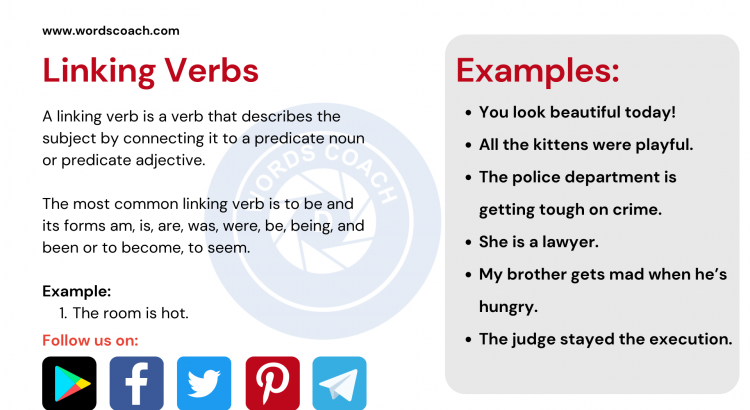What are Linking verbs?
A linking verb is a verb that describes the subject by connecting it to a predicate noun or predicate adjective.
The most common linking verb is to be and its forms am, is, are, was, were, be, being, and been or to become, to seem.
Linking verbs do no longer describe any direct physical or mental action of the problem or any motion managed by the challenge.
Example:- The room is hot.
The verb links the main noun, room, with a describing word, hot. Hot is an example of an adjective.
Examples:
- You look beautiful today!
- All the kittens were playful.
- The police department is getting tough on crime.
- She is a lawyer.
- My brother gets mad when he’s hungry.
- The judge stayed the execution.
List of Linking verbs:
We tried to introduce most of the linking verbs into this very list.
Forms of be:
| Is | Can be | May be |
| Are | Could be | Might be |
| Am | Will be | Must be |
| Was | Would be | Has been |
| Were | Shall be | Have been |
| Be | Should be | Had been |
| Had | Has | Have |
| Do | Does | Go |
| Is being | Might have been | Should have been |
| Shall have been | Will have been |
All of the sense verbs:
| Look | Smell | Touch |
| Sound | Feel | Taste |
| Appear |
The “States of Being” verbs:
| Act | Stay | Grow |
| Get | Prove | Turn |
| Some | Remain | Become |
Examples:
- The soup tastes spicier than usual.
- He stayed curious all his life.
- The milk tasted horrible.
- The fruit smells spoiled.
- The professor is absolutely sure.

